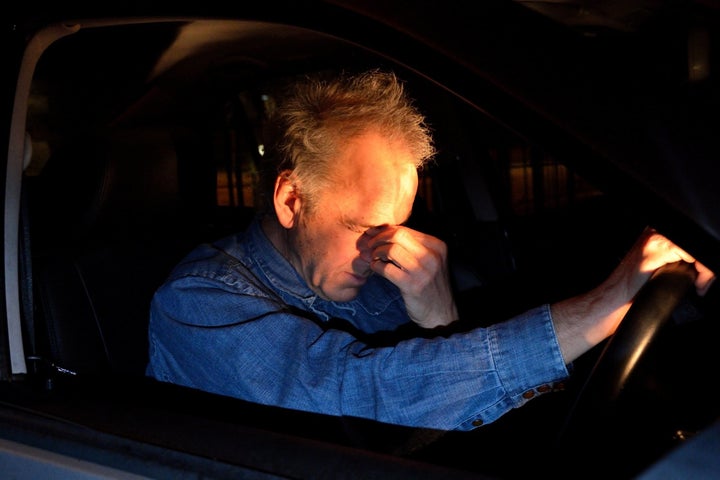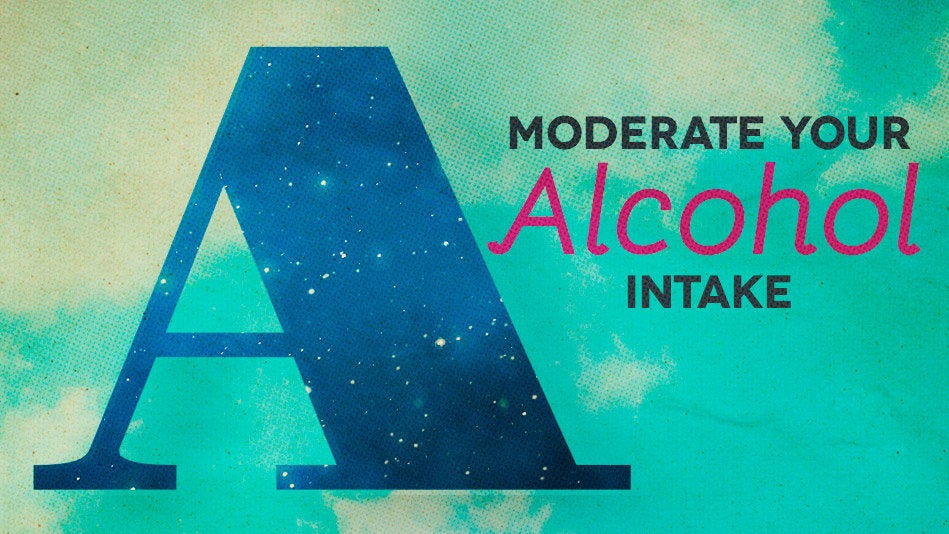
Adam Lister via Getty Images
Driving tests in real vehicles revealed 37.5 percent of participants had near-crashes -- and 43.8 percent of the tests had to end early over safety concerns.
Working the night shift is a known health hazard. Scientists theorize that staying awake at night goes against our natural circadian rhythm, the body's internal clock, which is why people who work after hours are more prone to heart attacks, heart disease, diabetes, obesity, stroke and depression.
The drive home after a night shift can be hazardous too, confirms a small but compelling new study involving a global team of researchers from Boston and Australia. They conducted daytime driving tests on a closed driving track among 16 night shift workers who had just come off the job. The study found that the volunteers' driving was dangerously worse after work than if they'd had a full night's sleep.
Six of the participants (37.5 percent) had 11 near-crashes during the driving test, which required the safety supervisors to use their emergency brakes to prevent a collision. The researchers terminated the two-hour driving test early for seven participants (43.8 percent) over concerns for the safety of everyone in the car. Based on the numbers, the researchers suggest that the night shift workers and their employers find a way for workers to get home that doesn’t involve getting into the driver’s seat of a car, or come up with strategies to reduce drowsiness after a shift.
"These findings help to explain why night shift workers have so many more motor vehicle crashes than day workers, particularly during the commute home,” said study co-author Dr. Charles A. Czeisler, chief of the Division of Sleep and Circadian Disorders at Brigham and Women’s Hospital in Boston, in a statement.
The study is the first time researchers have assessed the impact of night shift work on driving in real vehicles, as opposed to using a simulated method.
After sleeping almost eight hours the night before with no shift work, the 16 participants had zero near-crashes -- and all finished the agreed-upon two-hour driving test. But when participants went through the same test after a night shift (at this point, it had been an average of 13 hours since their last sleep), there was a statistically significant increase in lane drifting, slow eye movements and “microsleep episodes” -- temporary shut-eye that last more than three seconds.
All of the near crashes occurred after at least 45 minutes into the driving test. About 15 percent of workers in the U.S. drive more than 45 minutes each way of their commute, the study notes. The researchers wrote that the safety supervisors who accompanied participants on these driving tests could tell that the workers were drowsy and impaired within the first 15 minutes of the drive.
The experiment, published Monday in the journal Proceedings of the National Academy of Sciences, was conducted on a driving track that belongs to vehicle insurer Liberty Mutual Insurance. In an emailed statement to The Huffington Post, the Liberty Mutual Research Institute for Safety said that they hope "a deeper understanding of the mechanisms involved in drowsy driving can lead to effective prevention strategies that would help alleviate this major public health concern."
There are several limitations of the study. One in particular is that the driving tests took place on a closed driving track with a simple design relative to real streets. Even though this means the participants were driving real cars, they were not encountering real-life commuting challenges like the behavior of other cars, pedestrian traffic and complex road navigation. The additional challenges of a real commute may actually serve to enhance wakefulness in drivers, as the higher stakes might force them to be more alert, the researchers note.
The study's observation methods -- like having to stop the driving test every 15 minutes to survey the driving participants, asking the drivers to attach EEG electrodes to their heads to measure the microsleep episodes and making them wear special glasses to measure the speed of their eye movements and how long they blinked -- may have artificially made the participants more alert than they’d normally be on a real drive home. Yet, Czeisler points out, all these conditions, the monitoring measures and added social pressure, couldn’t keep about 44 percent of participants alert enough to complete the driving test.
“This was real driving in an actual car, putting everyone involved in the experiment at considerable risk,” he said. "And yet the impairment still came through, which shows just how strong the biological drive for sleep is."
The responsibility is on everyone -- from the shift workers to companies and all the way up to public officials -- to work on countermeasures to combat the dangers of drowsy driving, Czeisler said. For instance, while drinking coffee can help keep night shift workers awake on their commute home, it’s no solution to drowsy driving, and it may make matters worse for night shift workers in the long run, Czeisler explained.
“Yes, caffeine will help, but there’s no silver bullet here that will solve the problem because what tends to happen is that people drink caffeine and then push themselves harder,” he said. "The other problem with caffeine is that it interferes with daytime sleep, and [night shift workers] have enough trouble sleeping during the daytime in between shifts -- let alone if they’re drinking caffeine right before going to bed.”
Instead of relying on caffeine, night shift workers should invest in blackout shades and other tools to help them sleep during the daytime, in between shifts, Czeisler said. And if banking a normal amount of sleep during the daytime isn’t helping, consider going to the doctor, Czeisler suggested, who may diagnose shift work disorder and prescribe medication to help keep you awake on a long drive home.
Companies have a responsibility as well to guard against drowsy driving, Czeisler continued.
“Let’s say there's a factory one hour away from a major city,” he said. "Presuming people are going to drive that distance, [the company] should hire a shuttle service, at the very least to bring people to a major city where they can get public transportation to their homes."
Drowsy driving is a serious problem in the U.S. About four percent of Americans report that they’ve fallen asleep while driving, and the National Highway Traffic Safety Administration estimates that driving while sleepy was a factor in 72,000 crashes, 44,000 injuries and 800 deaths in 2013. These numbers are likely an underestimate, according to the Centers for Disease Control and Prevention.
Those most at risk of drowsy driving are shift workers, commercial truck and bus drivers, people with untreated sleep disorders or who take sleep medications and anyone who simply doesn't get enough sleep, according to the CDC. If you’ve missed your exit, find yourself drifting across lanes or hit a rumble strip (bumps on the side of the road meant to jolt you awake), pull over immediately to sleep or change drivers, the public health institute advises. Blasting the radio or rolling down the windows do not help keep you awake, authorities warn.
"You might say, well there’s no other way I can get home from work,” Czeisler said. "But if you realized that you might actually die or kill somebody, maybe you’d come up with another alternative.”
CORRECTION: A previous version of this story incorrectly stated that Liberty Mutual Insurance funded the experiment. They supported it by providing the driving track.
Also on HuffPost:
